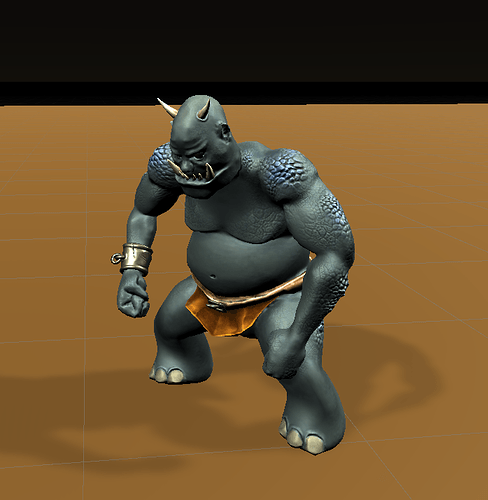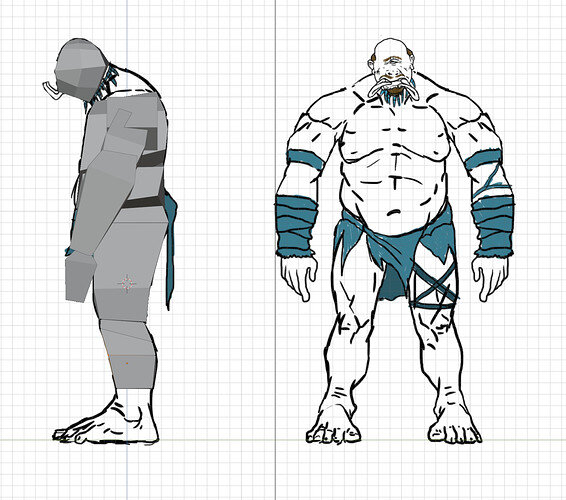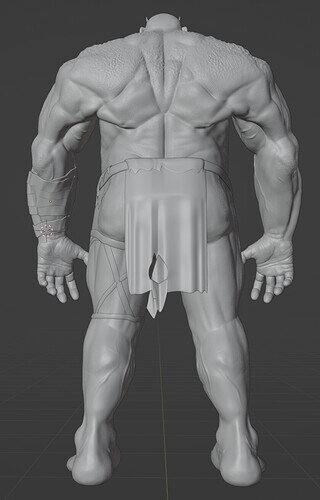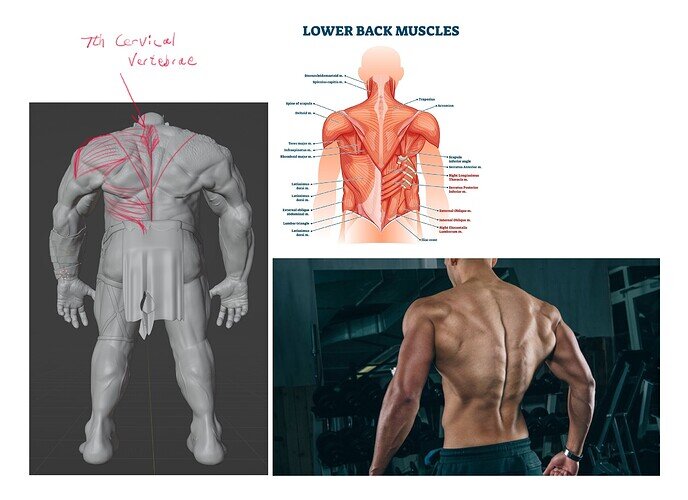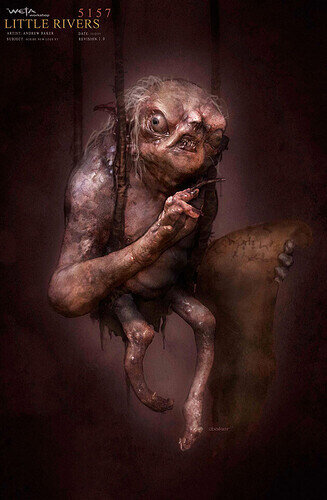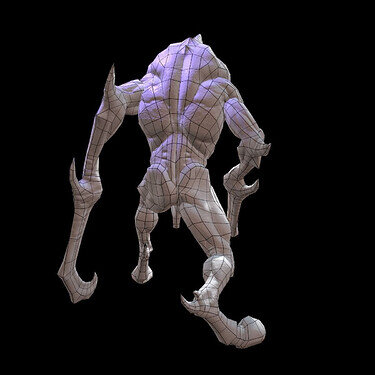No need to post videos, I’m happy it is very similar to the one in the course! Thanks for making this great courses. Definitely recommended.
Hey there! Excellent job! Seems you nailed it! I love seeing everyone’s ogres, think perhaps we can get a few more shots of him? Looks great!
Welcome back, you have made a nice job of that.
Thank you!! I am trying to redo all the course, but with a character of my choice. In this case a Cyclops.
We will see how it ends!
nice one
Oh heck yeah, that’s one awesome idea and design.
Wow! Really awesome work - well done you xxx jess
What does he do to get his arms so shredded? 
Maybe he lifts many heavy rocks all day.
Very cool take on the character course. There are a few parts where the anatomy seems a little off, but being a cyclops has it’s creative freedoms 
I am trying do it a bit distorted from the human body, since it is 3m tall. So I am trying to deform it to be like a troll. On the other hand I am still doing the clothing which Is a key part of the design if you see the original model. Anyway, I havent figured out how to do the inner mouth and the hair. Do you know any good tutorial for exporting to Unity? I want to see this cyclops alive at the end.
I think there are a few videos at the end of the course exporting the ogre to Unity with the Mixamo animations, but I stopped just prior to that. Unfortunately I don’t know of any others, I have yet to expand my workflow to a game engine 
yes, there are a few videos about Unity and animations with mixamo. This a picture of the back, for you to see anatomy and proportions.
Oo cool, thanks for sharing! 
I like seeing other folks’ anatomy studies.
I am still learning myself, so take this with a grain of salt, but here are some issues I see:
-
The trapezius is too narrow, and there’s an important bony landmark missing called the 7th cervical vertebrae.
-
The shape of the rear deltoid is off, see how it kind of comes to a point on the side deltoid.
-
The lats need to sweep down from under the armpit to the spine.
Some other notes, it’s helpful to lay down bony landmarks prior to any muscle mass. That gives you a guide to where and how the muscles attach (although you’d have to learn this too!). When sculpting muscle bodies, try to direct your strokes in the same direction of the fibers. This will give it a much more natural look and become more visually appealing as well.
The YouTube channel FlippedNormals have some useful videos on sculpting in Blender, and even their ZBrush videos are helpful for Blender sculpting since many tools and brushes are similar.
Lastly, I wouldn’t necessarily recommend trying to apply any of these critiques to your current model since it’s already through the detailing stage (unless you want to!  ). You’ve made a very cool and detailed model, and my suggestion would be just to file this info away for your next sculpt!
). You’ve made a very cool and detailed model, and my suggestion would be just to file this info away for your next sculpt!
Hope this is helpful 
Thanks for the tips, however, as I said, I wasn’t trying to copy the human body, as this is a fantasy character. This is a cyclops with a body more like a troll. none of my references came from a human body except for the hands and the feet, maybe the head structure. This is a monster, not a human. But again, thanks for your interest. As you will see I have invented muscles that do not exist. I was inspired by Bruce Lee, he you can train muscles you didn’t even know you had xDD. Anyway, other thing I’ve done is to move the elbow position to the outside like 15º. Not a lot, but a touch. Arms are a bit distorted too. The idea is to mutate a human body into a 3m tall monster with 1 eye. I wanted to put a tail, like a monkey but I discarded that idea at the end.
I am at the moment doing the clothing work, with the leather straps and everything. I think I can solve the innermouth with a cavity inside the mesh.
Interesting work and it is coming along. It will be neat to see what it will look like when colour comes into play.
I think what @ZachDude is attempting to get at is that if something is humanoid, what makes it humanoid is that its body structure is very similar to a human’s body structure: muscles, shape, overall features, be it a hobbit or Galacticus. The more human it looks, the more convincing it will be.
The average bystander will be able to quickly tell that something is “off” or “right” based on an intuitive knowledge of the human body. The further a picture or model departs from this, the less convinced the eye becomes. Unless, of course, the creature is meant to take on some other creature’s qualities (beetles, dogs, ect.). This is where a good knowledge of a creatures structure is vital, and where good reference material becomes key, especially when you are mixing between different creatures.

(This person wanted critical feedback- they realized that in order to improve, you need people to poke holes in your work. Even if there are lots- in their case there was lots- the spine is much too big and pronounced to name a few)
Troll: you are creating a troll, here is a literal trolls anatomy:
It seems correct, but only because the author is knowledgeable of the human anatomy. The muscles are exactly where the human muscles are, the only difference being their size across the frame. Not only that, anatomy includes right fat placement.
Ugly Troll:

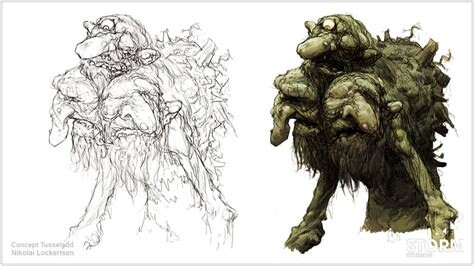
This last one is a good example, being that it is very “distorted” and “Fantasy” like, but having the muscles placed in a very “human way”, allows it to fly.
All of these are monsters, but if their anatomy does not add up, they cannot even walk without spraining a muscle.
We don’t have to be doctors to have super anatomy, but the difference between a convincing model (low or high poly) or an unconvincing “okay” model, will inherently be within its basic anatomical structure.
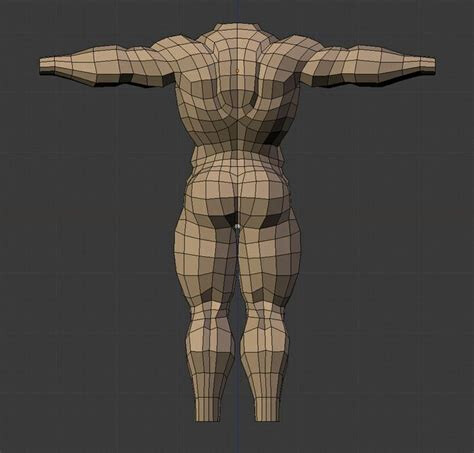
Low poly troll:
Low poly fantasy monster:
After working for many years as a graphic designer I have learned something that perhaps both you and @ZachDude have not learned if your business model is based on another master’s degree. And it is that you have to know how to distinguish who is asking for feedback and who is not. I’m clearly not doing it. Do not take this comment badly, neither you nor @ZachDude , but you have to understand that what you are telling me, although it is 100% valid, I am not going to use it nor have I asked about it since this work is not commissioned, it is an artistic project, for a game that I’m putting together myself. Perhaps the only question I asked, to which no one has answered me, is how the inside of a mouth would be made.
A mouth. Extrude in from the lips, scale, extrude etc and create the ‘hole’. Its all the same but a bit inside out feeling. Probably using wireframe views if it were me. If it still has a mirror modifier on it you can turn it off and see the inside of the body and head. Helping the fitting.
That is a brilliant idea. I was thinking about a boolean. I think your idea may work even better
I believe you have us all wrong there sir! What happens if our model was that of a PHD Degree? 
You would be giving us far more credit than we deserve! 
You have proved me blind as a bat!
But such is the nature of student boards: unless explicitly told, we eager unwitting students think any post is fair game to test out our newly acquired knowledge! Isn’t that the nature of any Master Degree course? We simply must try out what we think we know, even when we really don’t.
Can we poor crude confused creatures of the master degree be truly blamed? 
I am looking forward to seeing this beast/cyclops/monster with human hands and feet with that clothing you were making for him. I am sure that loin cloth piece must be making him really chilly.

